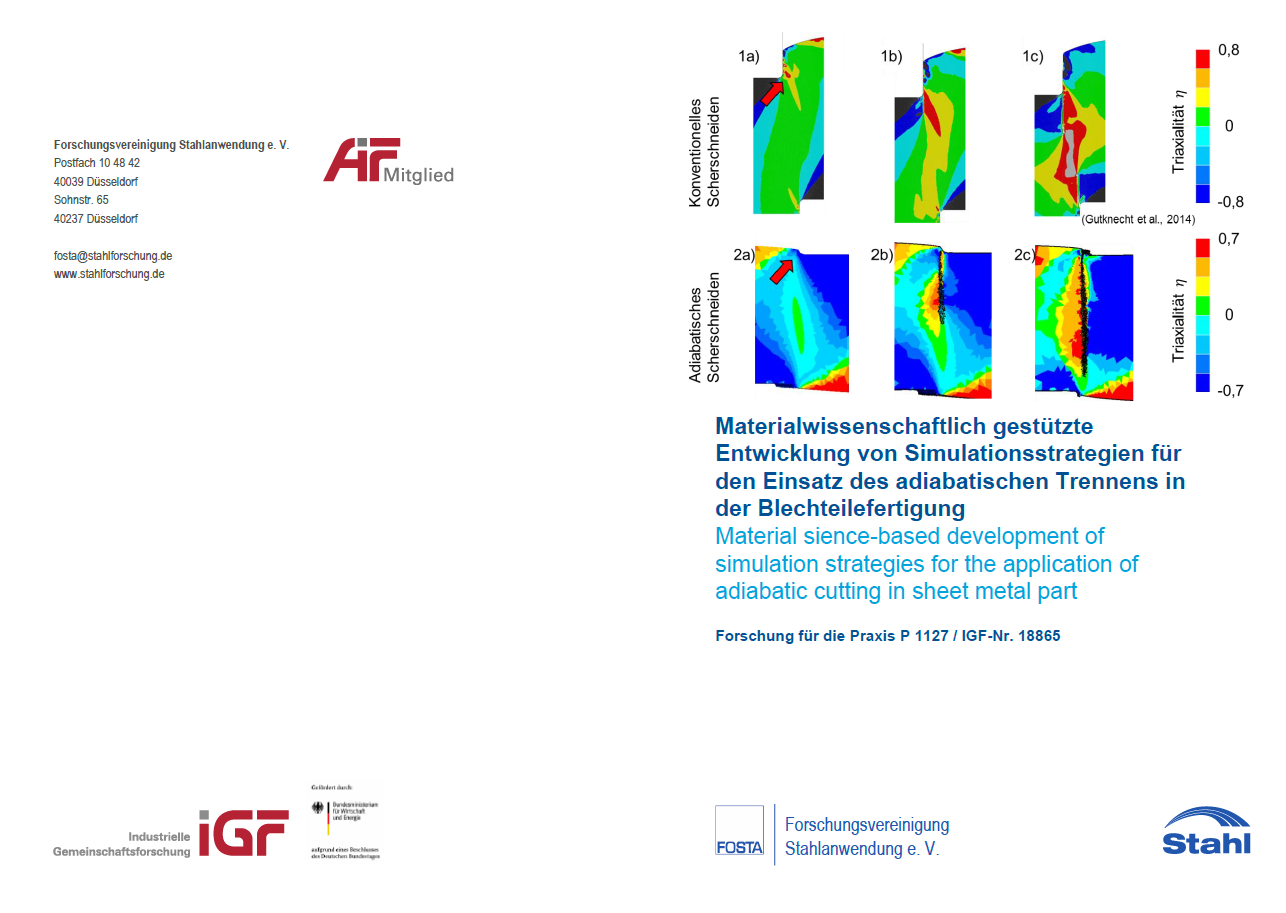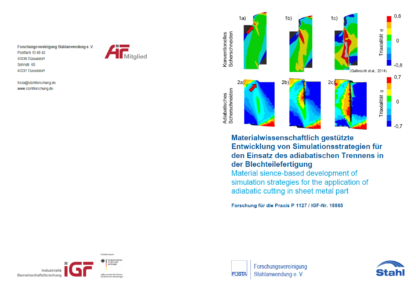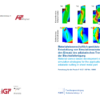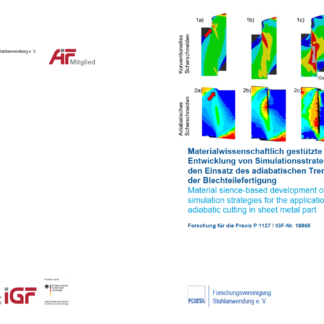Description
P 1127 – Material sience-based development of simulation strategies for the application of adiabatic cutting in sheet metal part
Steels with tensile strengths larger than 1000 MPa are widely used in the automobile industry to reduce the amount of used material and pursue lightweighting. Virtually every sheet metal component undergoes a material separation process during its manufacturing. Conventional blanking or fineblanking cannot be used for high strength steels without extensive pre- or post-operations.
Adiabatic blanking offers an alternative to conventional blanking or to cost-intensive laser trimming. It has been shown already that this process produces cut edges with a high quality concerning straightness, roundness and surface finish.
However, fundamental investigations on the application of adiabatic blanking for relevant high strength steels, such as widely used press hardening steels, are missing. Moreover, the evolution of the microstructure and its effect on technological properties are not described for adiabatic blanking of high strength steels. Fundamental approaches for the estimation of the necessary process energy, process velocity and classification concerning the feasible application of materials are not existent.
The objective of this project is to answer these open questions and to close the gap to industrial application of adiabatic blanking by providing a fundamental characterization of the process. Extensive material characterization experiments (temperatures up to 1000 °C and strain rates up to 1000 1/s) were conducted. Tensile tests with notched specimens served to determine the fracture behavior. A total of three steel grades were examined. On the basis of these investigations numerical and analytical models were developed to determine the local temperature and the necessary process energy for material separation. Adiabatic blanking tests were performed to manufacture cylindrical specimens and demonstrators (rectangular plates with rounded corners). It was shown that two of the investigated steels (20MnB5 und C75S) exhibited almost identical mechanical behavior in quasi-static tests at room temperature. In particular, it was demonstrated that the strain rate sensitivity has a large influence on the initiation and evolution of adiabatic shear bands. Moreover, the required process energy is also affected by the strain-rate sensitive behavior. The characteristic shape of the blanked edges was predicted with high accuracy by using FEM. The developed methods can be used for process design.
Main content only available in german language.
Published in:
May 2020
Authors:
Prof. Dr.-Ing. A. E. Tekkaya, Dr.-Ing. T. Clausmeyer, Dipl.-Ing. D. Staupendahl, F. Schmitz M.Sc., Univ.-Prof. Dr.-Ing. habil. M. F.-X. Wagner, Dipl.-Ing. S. Winter




